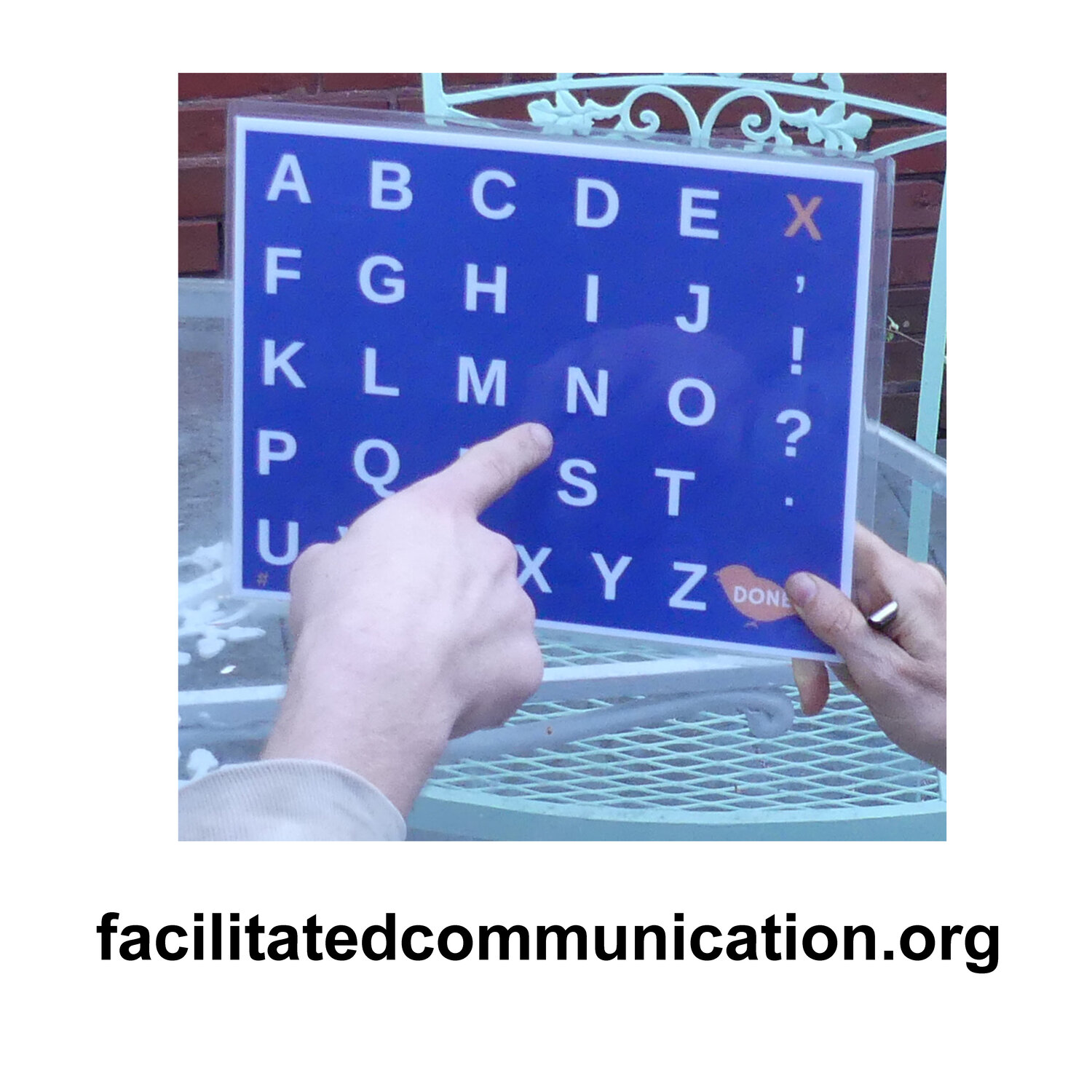Mechanical Hand Support and FC
Proponents of Facilitated Communication claim that human touch is needed during the typing process to help steady the individual’s hand (e.g., inhibiting random, uncontrolled movements) and provide positive support to “unlock” previously intact language and literacy skills. But facilitator cuing, sometimes visible to the naked eye, has raised serious questions about facilitator influence and control.
What if a mechanical device could be designed to steady an individual’s arm while typing and eliminate the facilitator (and the specter of facilitator control) altogether?
In 1998, some researchers did just that in a study published in the Journal of Autism and Developmental Disorders called “Evaluation of a Mechanical Hand-Support for Facilitated Communication.” Spoiler alert: post-assessment measures did not reveal any evidence of independent communication with or without the device.
Before proponents raise issues of “skeptics” somehow sabotaging the results of the study, I’ll point out that these researchers had an open mind about FC and wanted it to work. In fact, the study was not primarily designed to evaluate the efficacy of FC as typically practiced. It just happened to work out that way. One of the study’s authors, Bernard Rimland, is often referred to as the “father of autism.” Another author, Donald Billings, was a special education teacher certified and trained to work with orthopedically impaired students. Carol Berger had 8 years of experience with FC and was a proponent of the technique.
The goal of the augmentative hand-support system was to provide the individual with support, eliminate facilitator cuing, and serve as a transition between manual (facilitated) support and independent typing. The system included an adjustable stand to hold the keyboard, a coiled spring attached to the table with a T-bar or arm support attached to the top of the spring.
Augmentative Hand-Support System (Edelson, Rimland, Berger, Billings, 1998)
The students participating in the study were familiar with FC and were given ample opportunities to adjust to the hand-support system in a familiar setting (e.g., their regular classrooms). Researchers even extended the practice and use of the hand-support system beyond the scope of the study with some of the students in an attempt to “maximize the opportunity to find positive results.”
It seems these researchers bent over backwards to make either FC or the hand-support system “work” for these clients. They gave the individuals time to practice - with facilitated support, independently (without facilitator or mechanical-hand support), and with just the mechanical device. They pointed to pictures, letters, numbers, and words. The post-training phase used new but comparable stimuli.
The results showed that, with facilitator influence, all of the participants performed well above chance. Independently, the majority of participants could not reliably identify pictures, letters, and numbers or type words. (One individual had “relative success” pointing to pictures and numbers and another could point to pictures). None of the individuals using the mechanical hand-support system were able to point to letters or copy words reliably. The three individuals who could use the mechanical hand-support system while pointing to numbers could also do so independently (e.g., without any manual or mechanical support). In other words, as the authors wrote themselves, “inspection of that data revealed no evidence of positive findings.”
During the close examination of these students with and without FC, the authors also discovered inconsistencies in the reported success rate of the individuals using “traditional” FC (e.g., hand at the wrist). At best, the individuals achieved a 30% correct response rate when asked to copy simple words—well below proponent claims of quick proficiency in individuals with minimal training.
I bring this study up for a few reasons:
1) Even when researchers like these wanted FC to work, they were unable to demonstrate that independent communication could be achieved in these students. Facilitated answers were above chance level and demonstrated facilitator influence, just like all the controlled studies to date.
2) Even though they supported FC at the beginning of the study and did everything possible to help these individuals succeed by whatever means possible (e.g., manual, mechanical, independently), these researchers accepted the results in the end, even when no positive results could be reported. This is how science works. Their stance is admirable.
3) Current day researchers—proponents of FC—are using mechanical supports (e.g., eye tracking) to “prove” the efficacy of FC and its variants without ruling out facilitator influence. These studies omit the “independent phase” of the test protocols and make a presumption that FC “works” because people using FC say it works, while cherry-picking test protocols and data to make the research results appear more positive than they really are. It’s a shame, really.
Like Edelson, Rimland, Berger, and Billings, I would love it if FC and its variants actually provided individuals with profound communication difficulties a legitimate way to communicate independently. But, to date, there is no evidence to show FC is anything but facilitator influenced and controlled. Personally, until proponents can provide valid evidence of their extraordinary claims, I will take as an example these researchers and go where the evidence leads.


